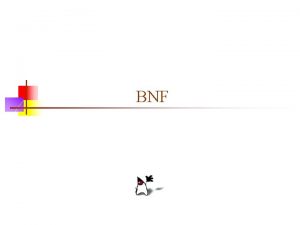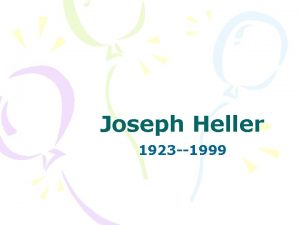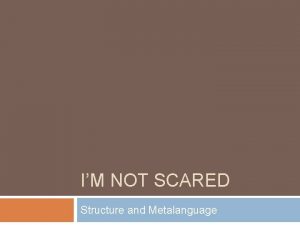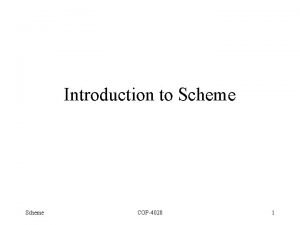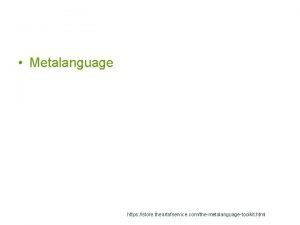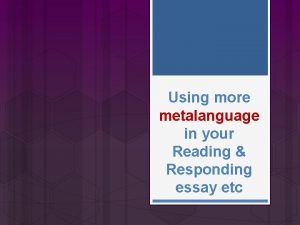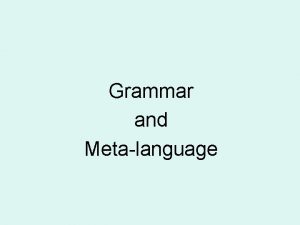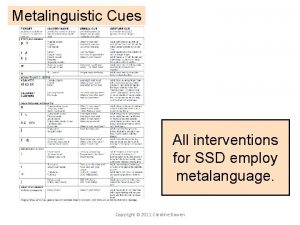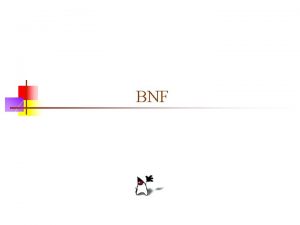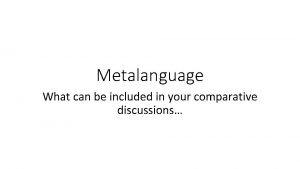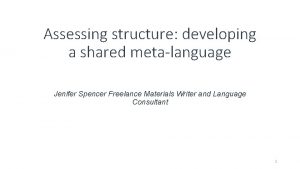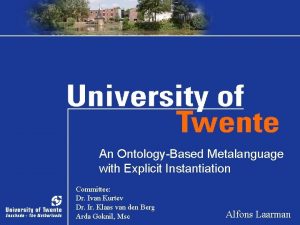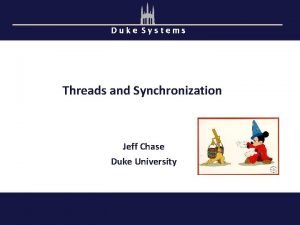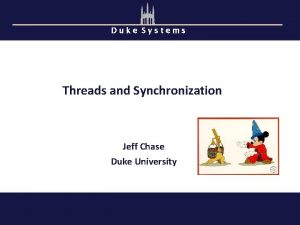Teaching a Metalanguage for Writing Joseph Harris Duke



















![David Marc extends Roland Barthes “The virtue of [professional] wrestling, ” Roland Barthes wrote David Marc extends Roland Barthes “The virtue of [professional] wrestling, ” Roland Barthes wrote](https://slidetodoc.com/presentation_image_h/318fe9bf56b0f3c6825684b2df1ebd44/image-20.jpg)














- Slides: 34

Teaching a Metalanguage for Writing Joseph Harris | Duke University

Aims Describe an approach to writing about texts and ideas Model a way of working with student texts 2 Teaching a Metalanguage CWP 2/09/2012

Context Process teaching Direct teaching Teaching a metalanguage 3 Teaching a Metalanguage CWP 2/09/2012

Process teaching Teach process, not product Teach writers, not writing Writing groups Writing to learn 4 Teaching a Metalanguage CWP 2/09/2012

Direct Teaching 5

What makes writing clear? (Style) 6 Teaching a Metalanguage CWP 2/09/2012

How do writers respond to other texts? (They Say/I Say) 7 Teaching a Metalanguage CWP 2/09/2012

Teaching a metalanguage Not directions for how to write but a set of terms to help students think about what they are doing as writers 8 Teaching a Metalanguage CWP 2/09/2012

My advice. . . is to imagine yourself as rewriting—as drawing from, commenting on, adding to—the work of others. Almost all academic essays and books contain within them the visible traces of other texts—in the form of notes, quotations, citations, charts, figures, illustrations, and the like. This book is about the writing that needs to go on around these traces, about what you need to do to make the work of others an integral part of your own thinking and writing. (Rewriting 2) 9 Teaching a Metalanguage CWP 2/09/2012

The visible traces of other texts

The moves of rewriting Coming to terms Forwarding Countering Taking an approach Revising 11 Teaching a Metalanguage CWP 2/09/2012

Coming to terms (understanding) Defining the writer’s project Noting key words and passages Assessing uses and limits 12 Teaching a Metalanguage CWP 2/09/2012

An example: Carol Gilligan on Sigmund Freud swallows his distaste at the thought of “abandoning observation for barren theoretical controversy” and extends his map of the psychological domain. Tracing the development of the capacity to love. . . he locates its origins in the contrast between love for the mother and love for the self. But in thus dividing the world between narcissism and “object” relationships, he finds that while men’s development becomes clearer, women’s becomes increasingly opaque. . . Relying on the imagery of men’s lives in charting the course of human growth, Freud is unable to trace in women the development of relationships, morality, or a clear sense of self. This difficulty of fitting the logic of his theory to women’s experience leads him in the end to set women apart, marking their relationships, like their sexual life, as “a ‘dark continent’ for psychology. ”

Defining Freud’s Project Freud swallows his distaste at the thought of “abandoning observation for barren theoretical controversy” and extends his map of the psychological domain. Tracing the development of the capacity to love. . . he locates its origins in the contrast between love for the mother and love for the self. But in thus dividing the world between narcissism and “object” relationships, he finds that while men’s development becomes clearer, women’s becomes increasingly opaque. . Relying on the imagery of men’s lives in charting the course of human growth, Freud is unable to trace in women the development of relationships, morality, or a clear sense of self. This difficulty of fitting the logic of his theory to women’s experience leads him in the end to set women apart, marking their relationships, like their sexual life, as “a ‘dark continent’ for psychology. ”

Noting Key Words Freud swallows his distaste at the thought of “abandoning observation for barren theoretical controversy” and extends his map of the psychological domain. Tracing the development of the capacity to love. . . he locates its origins in the contrast between love for the mother and love for the self. But in thus dividing the world between narcissism and “object” relationships, he finds that while men’s development becomes clearer, women’s becomes increasingly opaque. . . Relying on the imagery of men’s lives in charting the course of human growth, Freud is unable to trace in women the development of relationships, morality, or a clear sense of self. This difficulty of fitting the logic of his theory to women’s experience leads him in the end to set women apart, marking their relationships, like their sexual life, as “a ‘dark continent’ for psychology. ”

Assessing Uses and Limits Freud swallows his distaste at the thought of “abandoning observation for barren theoretical controversy” and extends his map of the psychological domain. Tracing the development of the capacity to love. . . he locates its origins in the contrast between love for the mother and love for the self. But in thus dividing the world between narcissism and “object” relationships, he finds that while men’s development becomes clearer, women’s becomes increasingly opaque. . . Relying on the imagery of men’s lives in charting the course of human growth, Freud is unable to trace in women the development of relationships, morality, or a clear sense of self. This difficulty of fitting the logic of his theory to women’s experience leads him in the end to set women apart, marking their relationships, like their sexual life, as “a ‘dark continent’ for psychology. ”

Forwarding (reading with) Illustrating Authorizing Borrowing Extending 13 Teaching a Metalanguage CWP 2/09/2012

Forwarding Authorizing “As research shows. . . ” Illustrating “For example. . . ” 18

Neil Postman borrows from Roland Barthes Television has achieved the status of “myth, ” as Roland Barthes uses the word. He means by myth a way of understanding the world that is not problematic, that we are not fully conscious of, that seems, in a word, natural. A myth is a way of thinking so deeply embedded in our consciousness that it is invisible. That is now the way of television.
![David Marc extends Roland Barthes The virtue of professional wrestling Roland Barthes wrote David Marc extends Roland Barthes “The virtue of [professional] wrestling, ” Roland Barthes wrote](https://slidetodoc.com/presentation_image_h/318fe9bf56b0f3c6825684b2df1ebd44/image-20.jpg)
David Marc extends Roland Barthes “The virtue of [professional] wrestling, ” Roland Barthes wrote in 1957, “is that it is the spectacle of excess. ” The sitcom, in contrast, is a spectacle of subtleties, an incremental construction of substitute universes laid upon the foundation of a linear, didactic teletheater.

Countering (reading against) Arguing the other side Uncovering values Dissenting 14 Teaching a Metalanguage CWP 2/09/2012

An example: Berger argues against Clarke We can now begin to see the difference between nakedness and nudity in the European tradition. In his book on The Nude Kenneth Clark maintains that to be naked is simply to be without clothes, whereas the nude is a form of art. According to him, the nude is not the starting point of a way of a painting, but a way of seeing which the painting achieves. To some degree, this is true—although the way of seeing “a nude” is not necessarily confined to art: there also nude photographs, nude poses, nude gestures. What is true is that the nude is always conventionalized—and the authority for its conventions derives from a certain tradition of art.

Berger on Clarke: Coming to terms We can now begin to see the difference between nakedness and nudity in the European tradition. In his book on The Nude Kenneth Clark maintains that to be naked is simply to be without clothes, whereas the nude is a form of art. According to him, the nude is not the starting point of a way of a painting, but a way of seeing which the painting achieves. To some degree, this is true—although the way of seeing “a nude” is not necessarily confined to art: there also nude photographs, nude poses, nude gestures. What is true is that the nude is always conventionalized—and the authority for its conventions derives from a certain tradition of art.

Berger on Clarke: Arguing the other side What do these conventions mean? What does a nude signify? It is not sufficient to answer these questions merely in terms of the art-form, for it is quite clear that the nude also relates to lived sexuality. To be naked is to be oneself. To be nude is to be seen naked by others and yet not recognized for oneself. A naked body has to be seen as an object in order to become a nude. (The sight of it as an object stimulates the use of it as an object. ) Nakedness reveals itself. Nudity is placed on display.

Arguing the other side What do these conventions mean? What does a nude signify? It is not sufficient to answer these questions merely in terms of the art-form, for it is quite clear that the nude also relates to lived sexuality. To be naked is to be oneself. To be nude is to be seen naked by others and yet not recognized for oneself. A naked body has to be seen as an object in order to become a nude. (The sight of it as an object stimulates the use of it as an object. ) Nakedness reveals itself. Nudity is placed on display.

Taking an approach (in the mode of) Acknowledging influences Turning an approach on itself Reflexivity 15 Teaching a Metalanguage CWP 2/09/2012

Some texts to work with How would you describe the stance that this student writer takes toward the text she is discussing? How might she be encouraged to develop that stance? How might she be encouraged to take another stance? 16 Teaching a Metalanguage CWP 2/09/2012

On Maya Angelou 28 Teaching a Metalanguage CWP 2/09/2012

On Billy Collins 17 Teaching a Metalanguage CWP 2/09/2012

On Carlos Fuentes 18 Teaching a Metalanguage CWP 2/09/2012

Revising What is my project? (Coming to terms) What works? (Forwarding) What else might be said? (Countering) What’s next? (Taking an approach) 19 Teaching a Metalanguage CWP 2/09/2012

Teaching with student texts Ask students to talk back in writing to texts they read Read assigned texts in class through student responses Ask students to respond to one another Focus on the stance students take toward readings 20 Teaching a Metalanguage CWP 2/09/2012

Rewriting } List four or five verbs that describe what you want students to do as writers in your courses. 33

Teaching a metalanguage for writing Joseph Harris Department of English Box 90014 Duke University Durham, NC 27708 jdharris 57@gmail. com josephharris. me 21 Teaching a Metalanguage CWP 2/09/2012
 Bnf is a metalanguage for
Bnf is a metalanguage for Digital design and computer architecture: arm edition
Digital design and computer architecture: arm edition Scaled down teaching situation
Scaled down teaching situation Fspos vägledning för kontinuitetshantering
Fspos vägledning för kontinuitetshantering Typiska novell drag
Typiska novell drag Nationell inriktning för artificiell intelligens
Nationell inriktning för artificiell intelligens Ekologiskt fotavtryck
Ekologiskt fotavtryck Shingelfrisyren
Shingelfrisyren En lathund för arbete med kontinuitetshantering
En lathund för arbete med kontinuitetshantering Kassaregister ideell förening
Kassaregister ideell förening Personlig tidbok
Personlig tidbok Anatomi organ reproduksi
Anatomi organ reproduksi Förklara densitet för barn
Förklara densitet för barn Datorkunskap för nybörjare
Datorkunskap för nybörjare Tack för att ni lyssnade bild
Tack för att ni lyssnade bild Debatt mall
Debatt mall Autokratiskt ledarskap
Autokratiskt ledarskap Nyckelkompetenser för livslångt lärande
Nyckelkompetenser för livslångt lärande Påbyggnader för flakfordon
Påbyggnader för flakfordon Vätsketryck formel
Vätsketryck formel Svenskt ramverk för digital samverkan
Svenskt ramverk för digital samverkan Jag har gått inunder stjärnor text
Jag har gått inunder stjärnor text Presentera för publik crossboss
Presentera för publik crossboss Jiddisch
Jiddisch Kanaans land
Kanaans land Klassificeringsstruktur för kommunala verksamheter
Klassificeringsstruktur för kommunala verksamheter Mjälthilus
Mjälthilus Bästa kameran för astrofoto
Bästa kameran för astrofoto Centrum för kunskap och säkerhet
Centrum för kunskap och säkerhet Programskede byggprocessen
Programskede byggprocessen Mat för idrottare
Mat för idrottare Verktyg för automatisering av utbetalningar
Verktyg för automatisering av utbetalningar Rutin för avvikelsehantering
Rutin för avvikelsehantering Smärtskolan kunskap för livet
Smärtskolan kunskap för livet Ministerstyre för och nackdelar
Ministerstyre för och nackdelar
